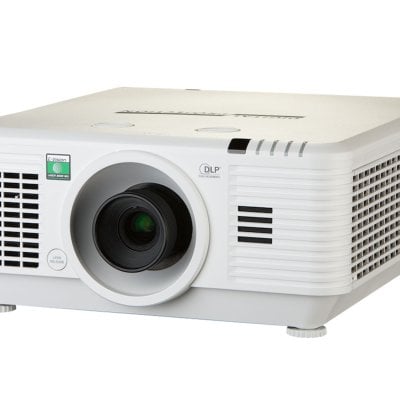The projector lens is a very key component of the projector. We usually see glass lens and resin lens in the projector market. What are the differences between them? Which is better?
Glass lens
The glass lens is made of whole glass. It features stable operation, high hardness, long life, and slow aging. When used in projectors, glass lenses can reduce thermal defocusing, providing longer life.

However, it also has shortcomings. It is easy to break after severe bumping or crash. In addition, it has lower light transmittance and higher cost.
Some high-end projectors use whole glass lenses, but their prices are also expensive.
Summary:
Advantages: stable, high hardness, long life, slow aging;
Disadvantages: fragile, low light transmittance, high cost.

Resin lens
Resin lens is composed of the resin lens.
Resin lens performs better in terms of optical stability. Specifically, it won’t be affected by temperature and seldom appears fogging. In addition, it performs better in terms of impact resistance and light transmittance.
Of course, resin lens also has shortcomings. Its wear resistance and refractive index are inferior to the glass lens.
Summary:
Advantages: stable optical properties, strong impact resistance, high transmittance;
Disadvantages: poor wear resistance, low refractive index.

Glass Lens vs Resin Lens
Although glass lens has strong stability and long service life, the cost and transmittance can’t be neglected.
Nowadays, most projector manufacturers adopt a glass + resin compromise scheme, so as to improve the transmittance and service life of projector lenses.
The innovative aspherical optical resin one-time molding technology can effectively optimize the lens design. It has higher picture permeability and improves the utilization rate of light energy. In addition, it has weak thermal conductivity, which is less prone to fogging.
To conclude, we can pick a projector that combines glass lenses and resin lenses but with fewer resin lenses.




